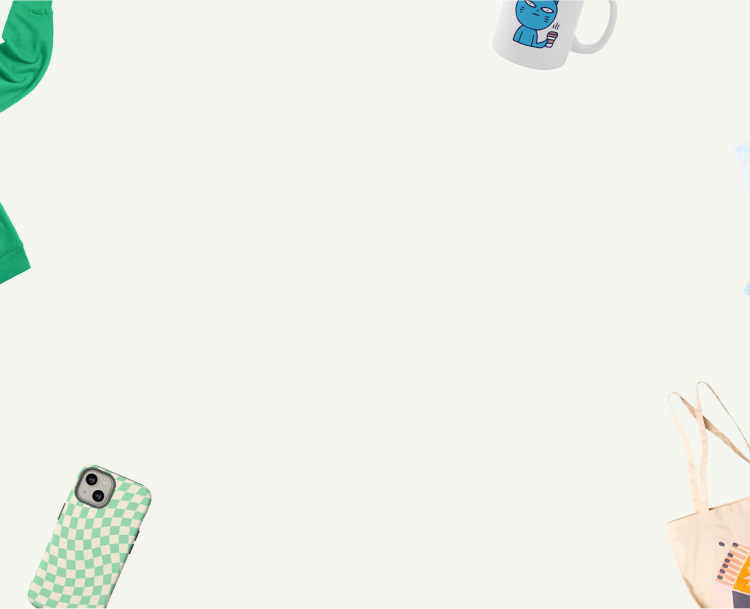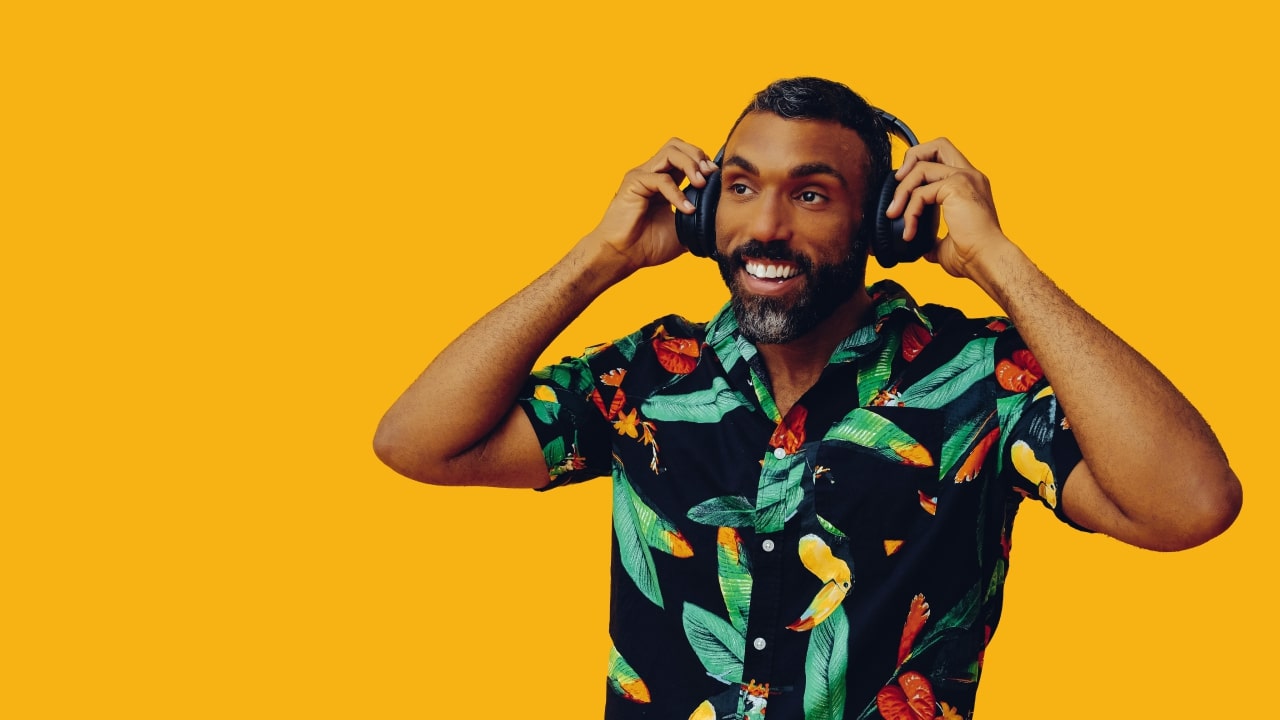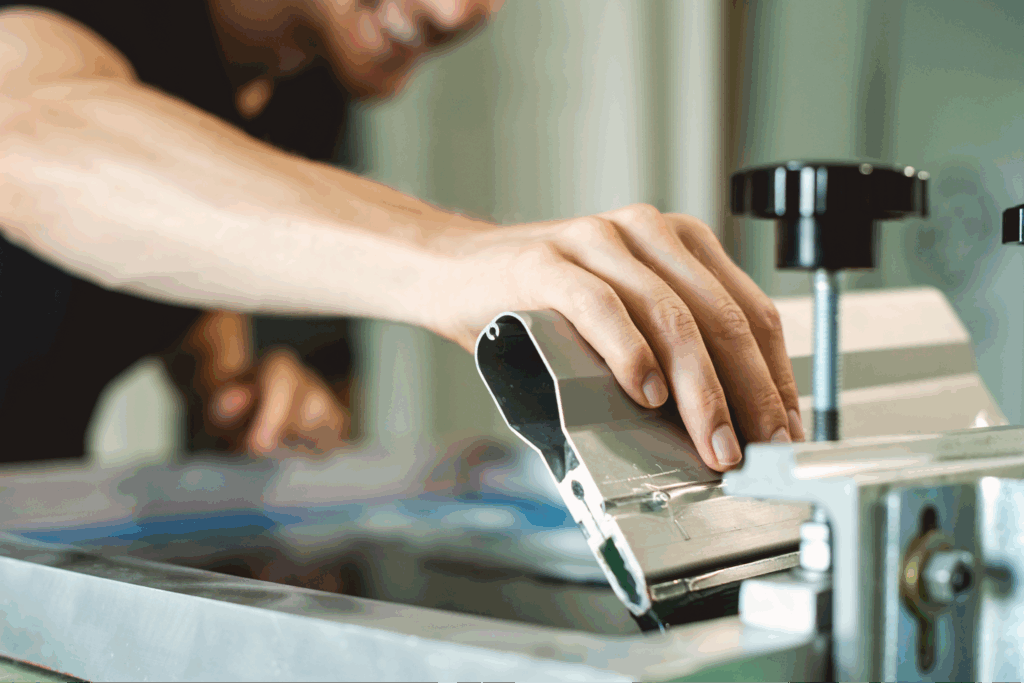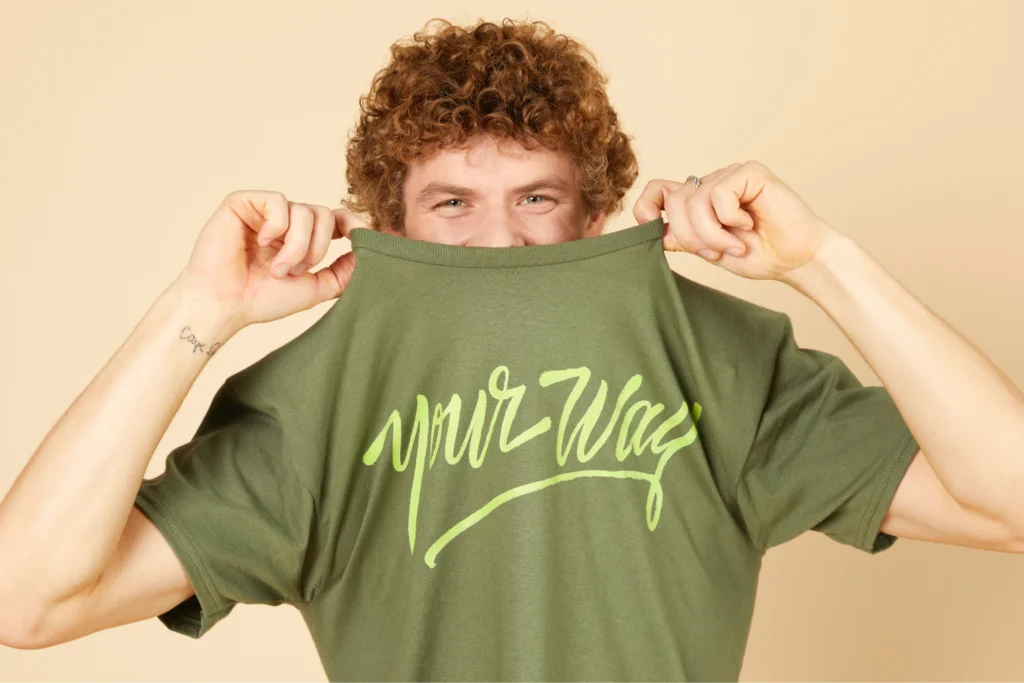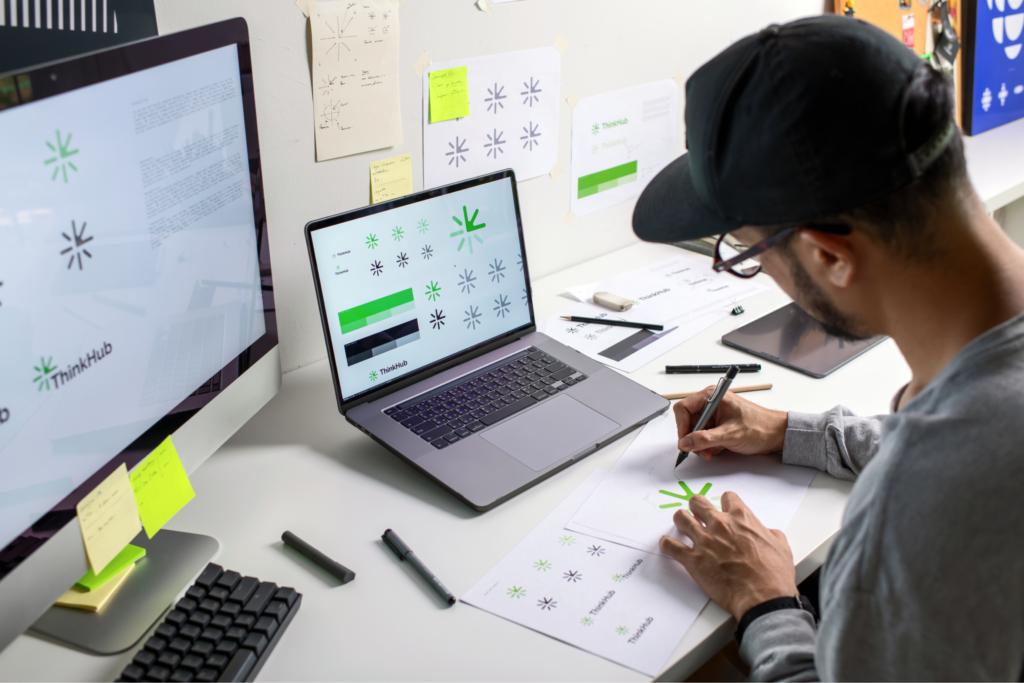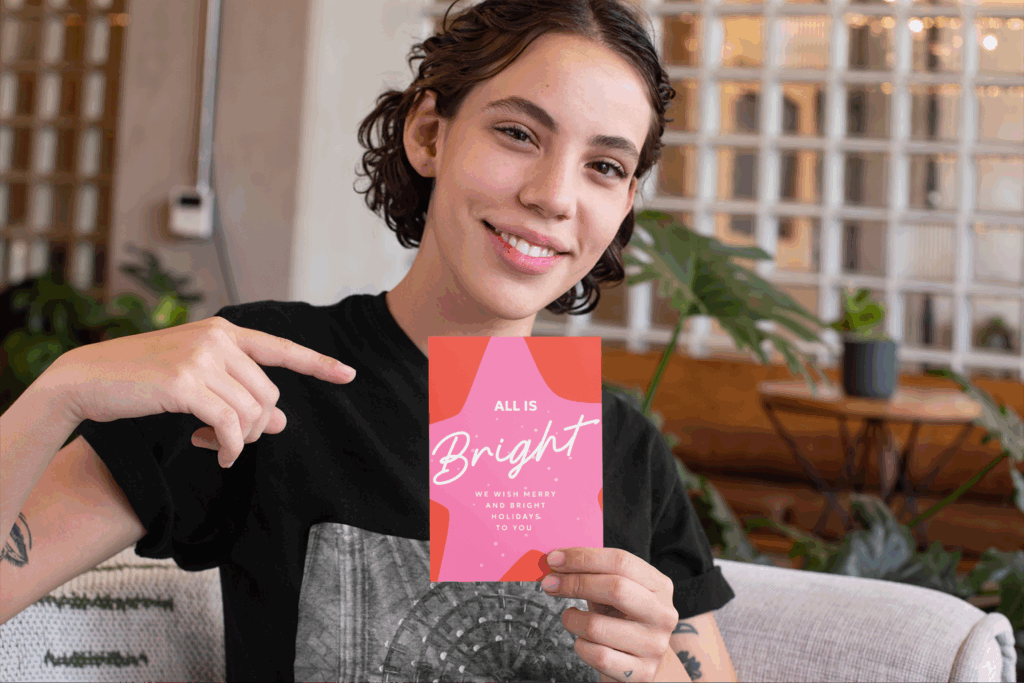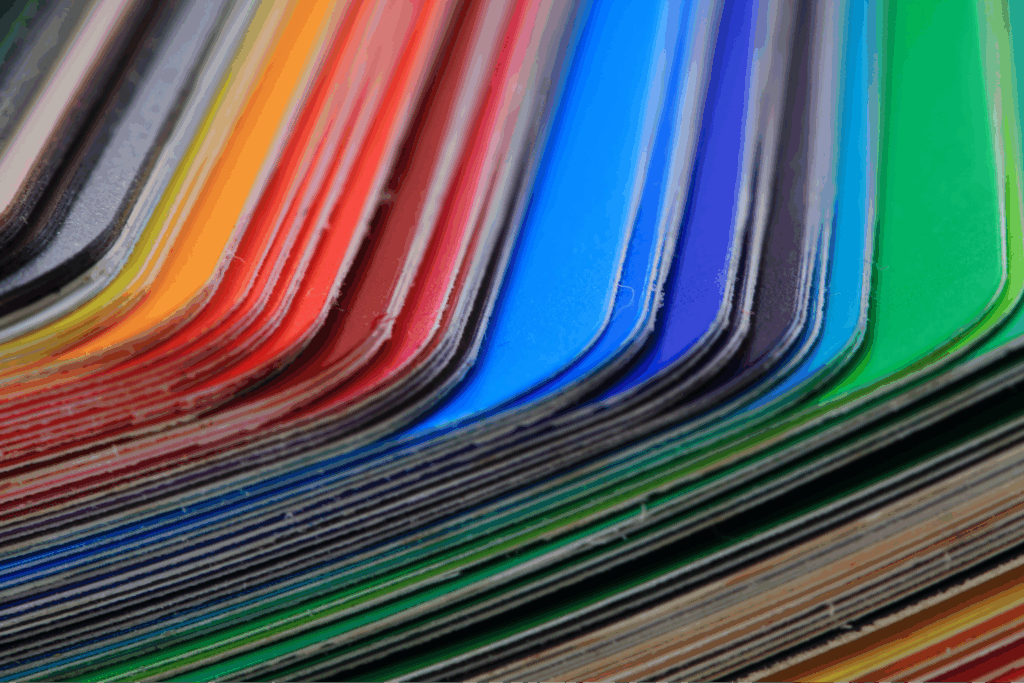Start your custom printing business today!
Are you looking for vibrant, long-lasting prints for everything from custom t-shirts to personalized drinkware? Look no further than sublimation printing! This versatile technique goes beyond fabric, allowing customization on metal, ceramic, and even mouse pads. Buckle up as we dive into the wonders of sublimation, exploring its pros and cons, ideal products, and how to use it for print-on-demand success.
Start printing for free!
Key takeaways
- Versatile printing. Sublimation delivers vibrant and durable prints on various products, from polyester t-shirts to drinkware.
- High-quality results. The sublimation technique produces permanent, high-quality prints that merge with the material, making sure they won’t crack or fade.
- Specialized equipment. Sublimation requires a unique type of printer, ink, transfer paper, and a heat press to create detailed, colorful designs.
- Easy setup with Printify. Connect your store to Printify, use the Product Creator or graphic design software for designs, and let Printify handle printing and fulfillment.
- Cost-effective and eco-friendly. Sublimation printing is cost-effective for single and bulk orders with minimal leftovers or wasted ink.
What is sublimation printing? How does sublimation work?
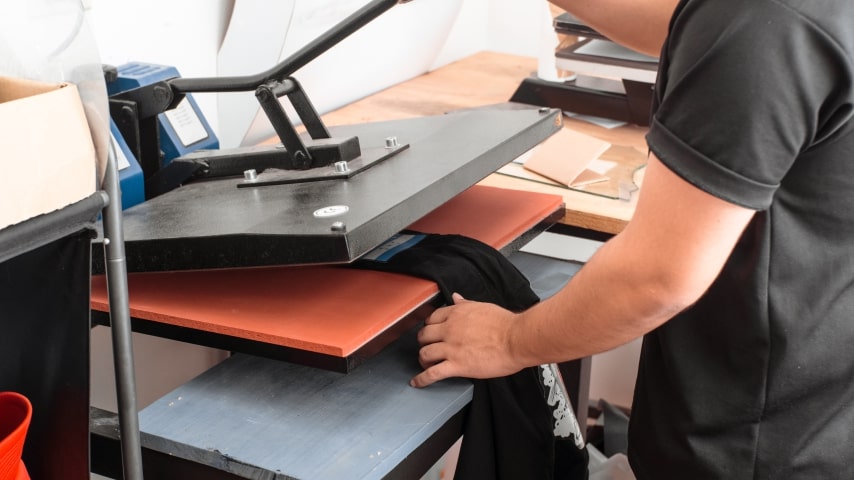
Sublimation printing is a process that uses high heat and pressure to transfer your design from sublimation paper directly onto your chosen product (material or fabric). The combination of pressure and heat embeds your artwork for long-lasting and vibrant results.
Did You Know?
Dye sublimation printing requires special ink, transfer paper, a heat press, a specialized inkjet printer, and other essentials. It uses heat to fuse ink and surface material or fabric in a permanent design.
Unlike traditional printing methods, heat and pressure turn sublimation inks into gas, penetrating the material and leaving a permanent imprint. Since it becomes one with the fabric instead of laying on top of it, the result is high-quality, vibrant, and significantly less prone to cracking or fading.
Here’s how the sublimation printing process works:
- A dye-sublimation printer prints your custom design onto a special transfer paper using sublimation inks.
- Then, you place the paper onto a product (enamel or ceramic mug, t-shirt, or other) and put both in a sublimation heat transfer press, applying immense heat and pressure at once.
- The heat turns the inks into gas, and the material absorbs them.
- As a result, you get a permanent, vibrant print that doesn’t lay on the product; instead, it becomes one with it.
The sublimation printing method allows for long-lasting designs – the images won’t crack or wear even after dozens of uses.
How to do sublimation:
Unlike traditional printing methods, sublimation uses heat and pressure to turn sublimation inks into gas, fusing with the material.
The design becomes one with the fabric instead of laying on top of it, resulting in high-quality, vibrant prints that are significantly less prone to cracking or fading.
Dye sublimation printing requires special ink, transfer paper, a heat press, and a specialized inkjet printer. It works best with synthetic fabrics like polyester.
Make it happen today!
Sublimation vs screen printing vs direct-to-garment
Sublimation, screen printing, and DTG each have their strengths and weaknesses. Let’s explore these popular options to find the perfect fit for your business.
| Screen printing | Sublimation printing | Direct-to-garment (DTG) | |
|---|---|---|---|
| Print quality | A fantastic print quality with a strong color saturation. Good for fluorescent colors and special effects. | Sublimation prints are unmatched in quality. They’re vibrant, permanent, and detailed. | High resolution, sharp details, full-color images. |
| Durability | Screen-printed designs are very durable, however, they will fade and crack after a while. | Extremely durable prints. Sublimation ink becomes one with the material – it will not crack, peel, or fade. | Designs resist fading and abrasion, comparable to screen printing. |
| Color scope | Best for simple designs with a few solid colors. | Full-color scope for vibrant images, patterns, or creative designs. | Wide range of vivid colors, can print photorealistic designs. |
| Materials and surfaces | Best for cotton shirts and cotton blends, even with dark colors. Specialty inks are also suitable for printing on metal, plastic, paper (silk screening), wood, and other materials. | The ink adheres well to light-colored polyester and other synthetic fabrics, as well as cork-based coasters and mugs (ceramic or enamel). | Works best on natural fabrics like cotton, requires pre-treatment for synthetics. |
| Costs | A more expensive method for single orders. | One of the most cost-effective printing methods for both single and bulk orders. | Low setup costs, but per-unit costs can be higher for low volumes. |
| Production speed | A lengthy process that takes time and preparation since each design element needs its own stencil. | Relatively fast production time. Dye sublimation printers print out the same design that heat presses infuse into the product. | Slower than some methods like screen printing, especially for bulk orders. |
| Design complexity | Screen printing works best with simple and bold designs consisting of only a few colors, as they need to be layered. | Sublimation printers can print close to anything, allowing you to create interesting textures, print digital photos, create patterns, and more. | Handles intricate designs and photorealistic images well. |
| Environmental impact | The screen printing technique works with non-biodegradable inks that are not eco-friendly. Bulk printing can also result in waste from leftover stock. | Sublimation dyes are non-toxic, and this method reduces leftover waste with on-demand printing. Sublimation uses less water than other dye transfer techniques. | Uses eco-friendly water-based inks, but pretreatment chemicals can have an impact. |
| Limitations | Screen print transfers the best results to cotton. It won’t work well with synthetic fibers, highly detailed or photographic designs. | The dye sublimation process is limited to a light polyester fabric for best results. It won’t work well with dark-colored natural materials. | Not ideal for thick fabrics or non-absorbent materials. |
| Volume | It’s cost-effective only for bulk orders. The setup and overall process of traditional screen printing aren’t worth the hassle for just one item. | Perfect for single and bulk orders thanks to its relatively simple printing process. | Suitable for low-volume printing and on-demand orders. |
| Washability | A screen print will withstand many wears and washes until it starts to fade, crack, or peel. | Highly washable and long-lasting. The design won’t crack, peel, or fade for a long time. | Designs remain washfast with proper care, following garment washing instructions. |
Screen printing is excellent for making t-shirts in bulk. Whether for events and charities or other occasions where you need more than one product. It works best for simple designs with a few base colors on soft cotton fabrics.
Sublimation is a more flexible printing process for creative designs, and it’s great for single and bulk orders. This digital printing technique is highly durable and eco-friendly for unique patterns and vibrant colors.
DTG is perfect for creating unique, small-batch garments with complex designs and photorealistic prints.
Where is screen printing used?
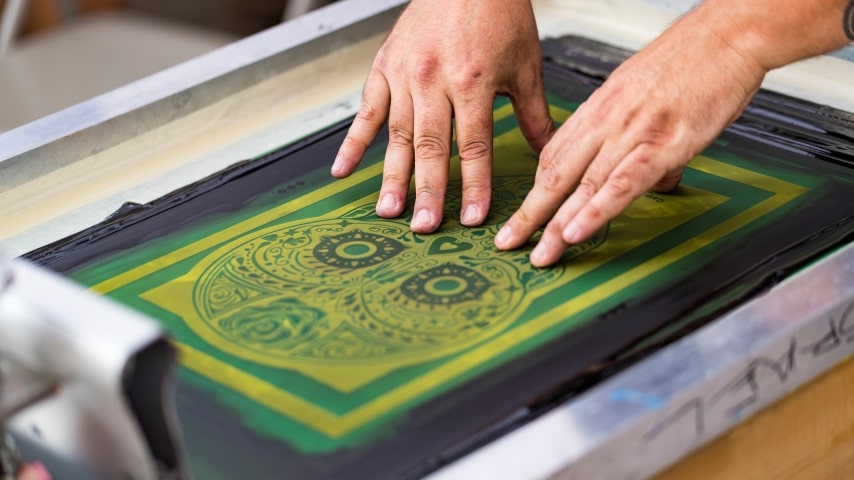
This printing process is often used for multiple products:
- Apparel. T-shirts, sweatshirts, hoodies, and more.
- Promotional products. Like mugs and tote bags.
- Sports gear. Custom backpacks, team jerseys, and uniforms in bulk are a hit.
- Banners and signs. Indoor and outdoor banners, posters, and signs.
- Any other flat surface.
What can I sublimate on?
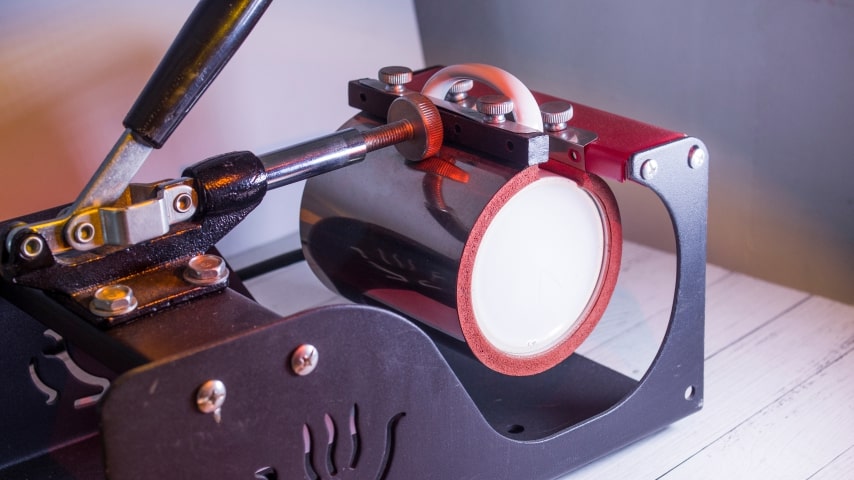
This digital printing method is used on anything that can handle custom-print designs. Such as:
- Apparel and accessories. Tees, custom hoodies, sweatpants, dresses, socks, scarves, and more.
- Gaming or office accessories. Like mousepads and desk mats.
- Home decor. Personalized curtains, rugs, pillows, and blankets.
- Promotional products. Like mugs, phone cases, and tote bags.
- Sports gear. Uniforms, fan merch, jerseys, and more.
- Wall art. Posters, canvases, banners, and other prints.
Sublimation printing pros
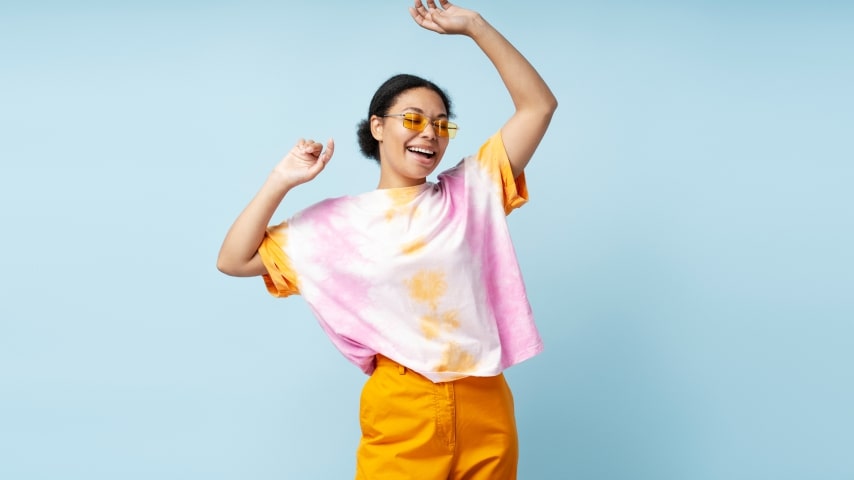
Pros:
- Almost no design limitations, from colors to complexity.
- Works with different products, from sublimation shirts and curtains to coffee mugs and posters.
- No minimum units. Perfect for printing one or a hundred products.
- Sublimation is one of the rare printing methods that allows for complete customization.
- Permanent, long-lasting, and durable designs that won’t fade, crack, or peel for a long time.
- A unique and vibrant print, unnoticeable to the touch, covering the product seam to seam or side to side.
- Environmentally friendly printing process compared to other printing methods.
Read more: Learn how to do sublimation in our design guide.
Sublimation printing cons

Cons:
- Limited choice of materials. Sublimation shirt printing is mostly available for polyester and polyester blends.
- Sublimation blanks have to be white for the best and brightest result. It’s not possible to print a black shirt or other dark-colored products.
- White creasing is a thing. If areas of the garment are left uncovered or simply out of reach, they’ll remain white.
Make it happen today!
Is there white ink in sublimation printing?
No. Sublimation uses a CMYK color scheme, so no combination of its base inks can produce white. To achieve white in a design, print onto lighter or white materials. Use a PNG file with transparent areas where you want the material’s white to show through.
What are the best-selling all-over-print (AOP) products?
All-over-print t-shirts and sweatshirts are popular choices, but don’t underestimate the rising star: sublimation socks! Check out this piece on how to sell sublimation socks like a pro and maximize your profits.
Designs that work well with sublimation printing

Sublimation printing works especially well with dramatic, whimsical, and almost, dare we say it – ridiculous designs. I can neither confirm nor deny that the author of these lines owns leggings with dozens of bratwursts printed on them.
What sublimation products does Printify offer?
In the Printify Catalog, you’ll find blank all-over-print goodies for every need: we offer leggings, shirts, hoodies and jackets, socks, custom underwear, custom swimsuits, bags, and countless home decor items.
If you’re looking for long-lasting POD products that feature distinct colors and high-resolution quality, keep an eye out for AOP clothing. The process is applied to achieve that vibrant, all-over, everlasting graphics on apparel and home decor.
Printify sublimation design: Technical recommendations
Here’s a technical rundown to prepare your design files for stunning all-over prints with Printify:
- Each product on Printify’s Catalog has a dedicated size guide. Refer to it to guarantee your design fits perfectly.
- The gray zone around the printable area with the dashed line around the design? That’s the bleed area. It’s a helpful guide for trimming, and won’t show up on your final product. Avoid placing text or key design elements there. Cover 100% of the bleed with your design when preparing an AOP product to avoid unprinted spaces.
- Resolution: Use 300 DPI for JPEG or PNG files whenever possible. For larger items like leggings or blankets, 120-150 DPI is acceptable.
- Color profile: We operate in RGB. Uploading CMYK files might cause slight color variations. Consider converting them to RGB beforehand for optimal results.
What makes Printify the best sublimation Printing Provider?

Printify is a free and foolproof way of learning how to do sublimation. With our giant Catalog of over 1,000 printable items and a network of more than 80 highly-rated Print Providers worldwide, Printify helps you make a profit with no hassle.
Streamlined fulfillment
Printify’s Print Providers handle order fulfillment so you, the merchant, can focus on marketing and growing your brand. Design your products, publish them to your online storefront, and Printify handles the rest without you needing to lift a finger after making a sale.
Production network
Printify lets you easily choose among the more than 80 global printing facilities and partners you want to work with. Pick based on what’s essential to your business – product, location, and price. By choosing Print Providers closer to your audience, you substantially save on shipping costs and fulfillment time.
Save more with Printify Premium
Printify is and always will be free to use for everyone. Integrate your sales channels with ease and publish as many products to your stores as you want. And with the Premium subscription, you get up to 20% off on all products, drawing more profit.
Easy integrations
Printify offers automatic integrations with some of the world’s most popular online marketplaces and eCommerce platforms: Shopify, Etsy, Wix, WooCommerce, eBay, BigCommerce, and more.
FAQ
To get started with sublimation printing, you’ll need a few essential items: a special sublimation printer, ink and transfer paper, and a heat press. Additionally, you’ll need blank items specifically designed for sublimation printing, such as polyester fabric, coated ceramics, or other specially treated substrates.
Yes, sublimation printing is an excellent method for producing high-quality, durable prints. It’s especially valued for its vibrant colors and the ability to print intricate designs. The prints are long-lasting and won’t crack, peel, or fade over time, making it a preferred choice for creating customized apparel, home decor, and promotional items.
Can a regular printer print sublimation? No, only a special printer designed specifically for sublimation printing will work, or one that has been converted.
Popular brands include Epson and Sawgrass, which offer models that are widely used in the industry. It’s crucial to use a printer that’s compatible with sublimation ink for the best results.
Both sublimation and screen printing are durable, but sublimation printing generally lasts longer. Sublimation dye becomes part of the fabric, which means it won’t fade, crack, or peel even after multiple washes. Screen printing is also durable, but it may eventually show signs of wear, especially if not properly cared for.
To start sublimation printing, follow these steps:
- Research and Plan: Understand the basics and gather information on the equipment needed.
- Purchase Equipment: Buy a sublimation printer, sublimation ink, sublimation paper, and a heat press.
- Get Blank Products: Find items specifically designed for sublimation.
- Design: Create or source designs compatible with sublimation.
- Print and Press: Print your design on sublimation paper and use a heat press to transfer it onto your blank item.
- Practice: Start with small projects to get the hang of the process and refine your technique.
It could be due to several reasons:
- Incorrect Color Profiles: Make sure you’re using the correct color profiles for sublimation printing.
- Clogged Print Heads: Perform regular maintenance and cleaning of the print heads.
- Low-Quality Ink or Paper: Use high-quality sublimation ink and paper designed for the best color reproduction.
- Printer Settings: Check and adjust your printer settings to match the requirements for sublimation printing.
- Software Issues: Make sure your design software is properly configured for sublimation.
Summary
Now that you know more about sublimation printing, it’s time to get started. With Printify handling the printing, you can focus on designing for your customers.
Set up your online store, connect it to Printify, and enjoy the process. Printify’s Product Creator is fun and easy to use, especially for all-over-print products. Start creating stunning, seamless designs that cover your high-quality blanks edge to edge.
